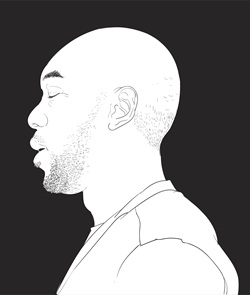
Family law in Canada is entering a new era where efficiency, transparency, and accountability are no longer luxuries but expectations. Across provinces, judges are sending a clear message that complete, timely, and traceable financial disclosure is not optional. It is foundational to justice.
For decades, family lawyers and mediators have managed disclosure through long email threads, attachments named “final_final.pdf,” and handwritten checklists. That approach worked when caseloads were lighter and the pace of change was slower. But the demands of modern practice, amplified by new court expectations, make that system untenable. Courts now emphasize that disclosure must be full, frank, and ongoing. Missing or late information does not just delay proceedings. It undermines credibility and increases costs for both sides.
Recent cases have made the point unmistakable. The Ontario Court of Appeal ruled that even when a spouse disputed jurisdiction, compliance with a financial disclosure order remained mandatory. In British Columbia, the Supreme Court highlighted how incomplete or late disclosure obstructs fair resolution and consumes valuable court resources. These decisions mark a shift in judicial attitude from leniency to accountability. They signal a new professional standard for how disclosure is handled.
This shift is good for the profession. It aligns with a broader transformation happening in Canadian legal practice that is powered by technology, automation, and a renewed focus on client experience. Family law professionals are realizing that efficiency is not the enemy of ethics. It is a tool for better service, clearer advocacy, and more trust in outcomes.
That is where DISCLOEZY has become a powerful ally. It is not just software. It is infrastructure for traceable disclosure. The platform automates document collection, organizes submissions, and records every transaction in a verifiable timeline. What once required hours of follow up and mental bookkeeping now unfolds naturally through automation and clear design.
The Timeline feature is the backbone of that reliability. Every action, every upload, update, or request, is automatically time stamped. Lawyers can instantly confirm when a client submitted income statements, when opposing counsel shared bank records, and when updates occurred. This audit trail does more than prevent confusion. It builds defensibility. When questions arise in court, counsel can demonstrate not only that disclosure occurred but when and in what order. That level of traceability is increasingly vital in a climate where the burden of diligence falls squarely on practitioners.
DISCLOEZY also simplifies one of the biggest pain points in family practice: client collaboration. Instead of managing endless attachments or chasing incomplete forms, lawyers can share standardized disclosure forms directly through the platform. Clients upload everything securely in one place, and both parties can immediately see what is missing or outdated. It removes guesswork, reduces errors, and ensures everyone is working from the same record of truth.
The system also encourages a healthier professional rhythm. Instead of spending hours coordinating administrative tasks, lawyers can focus on interpretation, advice, and advocacy, the parts of their role that technology should support but never replace. The platform does not automate judgment. It amplifies it. It is designed around the principle that great legal practice depends on clarity and confidence, and both grow when the administrative noise fades.
Federal child support guidelines already require parents to share three years of income information and provide updates as circumstances change. Provincial courts are increasingly enforcing these obligations through cost awards and sanctions. The legal landscape is shifting toward proactive transparency, and professionals who adapt early are setting the tone for the next decade of practice.
The beauty of this shift is that it restores the balance between efficiency and ethics. Tools like DISCLOEZY do not just make the process faster. They make it fairer. They ensure that both clients and counsel have visibility, that compliance is easy to verify, and that the emotional weight of family disputes is not compounded by procedural confusion. In an environment where trust is fragile and time is precious, that clarity is transformative.
The next era of family law is already here. It is transparent, traceable, and tech enabled. The professionals embracing that reality are not replacing tradition. They are redefining it. With systems that document every step, protect every action, and respect every hour spent on a case, they are showing that the future of law is not about doing more work. It is about doing the right work better.
DISCLOEZY stands at that intersection where automation meets accountability and where technology finally serves the heart of the profession: integrity.

 Marvin McKinney
Marvin McKinney

